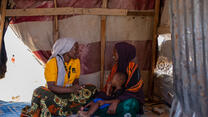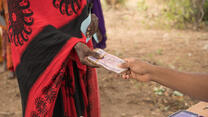FINDINGS FROM THE IRC’S CASH RESEARCH & DEVELOPMENT PROGRAM
PAKISTAN 2015-2016
Cash relief is one of the most effective and well-evidenced tools to help vulnerable people survive and recover in emergencies. Research has demonstrated that it is effective in enabling affected populations to meet basic needs, improve food security and economic well-being, and is increasingly used to support a number of outcomes in emergency settings. In 2015, the High Level Panel on Humanitarian Cash Transfers recommended large-scale expansion of the use of cash relief in humanitarian settings and, at the World Humanitarian Summit in 2016, the Grand Bargain on humanitarian financing included global commitments to increase the use and coordination of cash-based programming and invest in new delivery models which can be increased in scale.
As acceptance of cash as an effective method of delivering assistance has grown, attention is now shifting towards how to best delivery cash to people affected by crisis. Currently, it can take up to eight weeks for cash to be disbursed to affected families, and often much longer to reach significant scale. Delays in cash distribution can force people affected by crises to resort to negative coping mechanisms such as cutting the size of meals, engaging in harmful work practices and selling their assets. Increasing the speed of cash distribution in crises will support communities’ recovery and help prevent long term devastation. Increasing the cost efficiency of cash relief - making it cheaper to administer, transparently manage and comparable across programs - will mean scarce aid resources reach many more people when they need it most.
The International Rescue Committee (IRC) is committed to scaling the use of cash in humanitarian crises while simultaneously testing the use of a range of delivery models, inclusive of government, private sector and civil society, to find the most effective and efficient means of delivering assistance. This framing shifts the focus away from how humanitarian agencies might most effectively deliver cash to focus instead on how crisis-affected people may receive cash assistance. To this end, the IRC has piloted and rigorously tested an innovative approach to cash relief programming. This approach leverages a pre-existing database and a technology enabled platform to identify people faster, streamline the paperwork and process of program implementation, and to process payments to those affected.
This next generation model for delivering cash in emergencies has cut in half the time required to disburse payments to beneficiaries, and shows great potential for reducing the operating cost of cash delivery. Furthermore, by utilizing pre- existing data on vulnerable households from a social protection program, this approach reduces by approximately 90% the opportunity cost of lost wages to the community due to participation in the program. Additionally, our approach is based on agile development which enables us to iterate each phase of development through a data-driven approach. We systematically measure program performance against cost, time and user experience metrics and benchmark against previous programs. We believe this model of service delivery and performance benchmarking of all cash projects will make a valuable contribution to the discussion on cash assistance delivery models and ultimately will have a positive impact for cash recipients. This briefing summarizes the methodology and results from the three pilot tests of the new operating model in Sindh Province, Pakistan.



